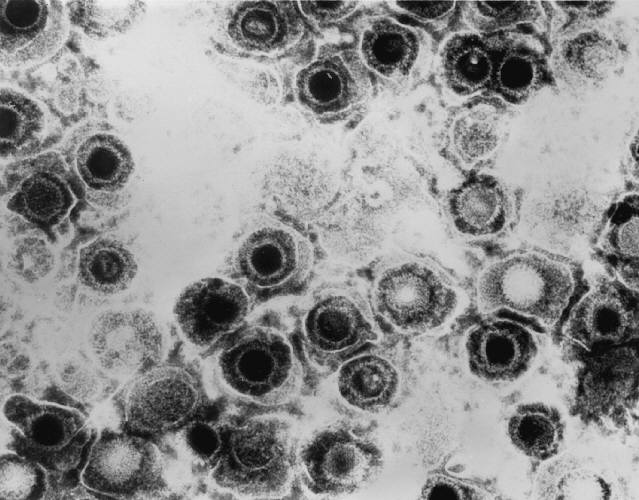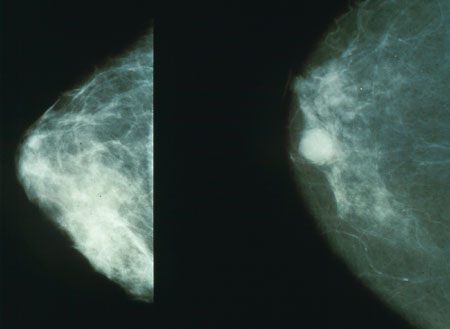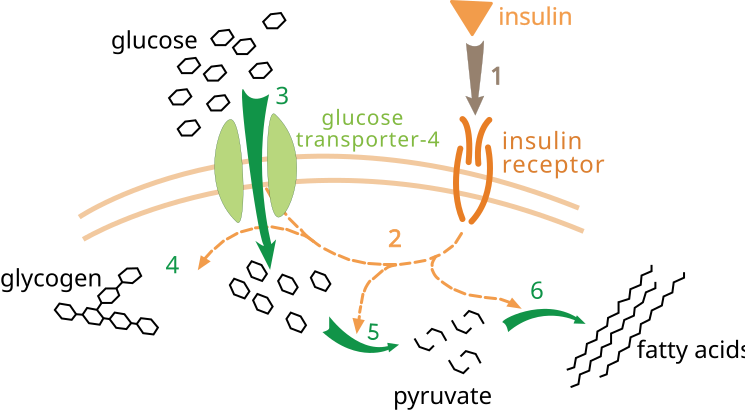SUBSTANCE DESCRIPTION
Propolis is a resinous mixture that honey bees collect from tree buds, sap flows, or other botanical sources. The composition of propolis varies from hive to hive and from season to season. Normally it is dark brown in color, but it can be found in green, red, black and white hues, depending on the sources of resin. Propolis is sticky at and above room temperature (20 °C) but at lower temperatures, it becomes hard and very brittle. The chemical composition of propolis varies considerably from region to region, along with the vegetation. In northern temperate climates, for example, bees collect resins from trees, such as poplars and conifers. Poplar resin is rich in flavonoids. "Typical" northern temperate propolis has approximately 50 constituents, primarily resins and vegetable balsams (50%), waxes (30%), essential oils (10%), and pollen (5%). The bees seals the beehive with propolis to protect the colony from the elements, such as rain and cold winter drafts. Propolis is also used by certain music instrument makers to enhance the appearance of the wood grain. It is a component of some varnishes and was used by Antonio Stradivari. Propolis is rich in phenolic compounds, which act as natural antioxidants; besides propolis is used as an antimicrobial, as an antiviral ,as an emollient to threat skin burns, as immunomodulator, as a dental antiplaque agent and an antitumor growth agent . For its potential role in contributing to human health, propolis is becoming increasingly popular.

MAIN CONSTITUENTS
These compounds are:
• Flavonoids such as acacetin,apigenin,quercetin,rhamnazin,galangin,pinocembrin etc.
• Vitamins such as thiamine (B1),riboflavin (B2),pyridoxine (B6),ascorbic acid ( C ),tocopherol (E)
• Minerals like Na,K,Ca,I,Mg,Zn,Fe,Cu
• Phenolic acids such as Caffeic acid phenethyl ester (CAPE)
• Enzymes such as Succinate Dehydrogenase, Glucose 6 phosphatase, Acid phosphatase
• Alcohols,aldehydes,terpenes,ketones, etc
MOLECULAR MECHANISM
• Flavonoids exhibit antioxidant activity because they can reduce free radical formation and scavenge free radicals. Reactive oxygen species (ROS) play key roles in many physiologic and pathogenic processes. In fact, many opthalmologic and neurodegenerative diseases seem to be mediated, at least in part, by oxidative stress. Excess ROS generation has damage to various cell components and triggering of the activation of specific signaling pathways. H2O2, O2·- and HO· are the best-known ROS. Propolis extract and its active components showed a dose-dependent free radical scavenging effect, a significant inhibition of xanthine oxidase activity, and an antilipoperoxidative capacity.
 Antioxidant activities of bee products and antioxidants: Table 1
Antioxidant activities of bee products and antioxidants: Table 1
• Caffeic acid phenethyl ester (CAPE) plays an important role in the antioxidant and anti-inflammatory activity of propolis. It inhibits both COX-1 and COX-2, is a potent leukotrienes biosynthesis inhibitor that blocks 5-lipoxygenase activity and arachidonic acid release.
Besides, CAPE attenuated expression of NFkappaB stimulated with TNF-alpha or LPS and suppressed LPS-mediated induction of iNOS, a target gene product of NFkappaB. CAPE interfered with TNF-alpha dependent IkappaBalpha degradation and subsequent nuclear accumulation of p65, which occurred by direct inhibition of inhibitory protein kappaB kinase.

• Acacetin, in particular, is a flavone compound, that has anti-cancerous effects. Vascular endothelial growth factor plays an important role in angiogenesis and tumor growth. Acacetin decreas the steady level of VEGF mRNA level and inhibites VEGF transcriptional activation. It inhibites HIF-1α expression and AKT activation. AKT and HIF-1 are the essential downstream targets of acacetin for inhibiting VEGF expression in the cells. Acacetin does not change HIF-1α mRNA level, but inhibites HIF-1α protein level through increasing its degradation and decreasing its stability. Acacetin may be a useful natural compound for cancer prevention and treatment.
Antiviral Activity
Propolis, an old remedy used in modern medicine.
Genital herpes caused by herpes simplex virus type 2 (HSV-2) is a chronic, persistent infection spreading efficiently and silently as sexually transmitted disease through the population. Antiviral agents currently applied for the treatment of herpesvirus infections include acyclovir and derivatives. Aqueous and ethanolic extracts of propolis revealed a relatively high amount of phenylcarboxylic acids and low concentrations flavonoids when compared to the ethanolic special extract GH 2002. The cytotoxic and antiherpetic effect of propolis extracts against HSV-2 was analysed in cell culture, and revealed a moderate cytotoxicity on RC-37 cells. The 50% inhibitory concentration (IC) of aqueous and ethanolic GH 2002 propolis extracts for HSV-2 plaque formation was determined at 0.0005% and 0.0004%, respectively. Both propolis extracts exhibited high levels of antiviral activity against HSV-2 in viral suspension tests, infectivity was significantly reduced by >99% and a direct concentration- and time-dependent antiherpetic activity could be demonstrated for both extracts. In order to determine the mode of virus suppression by propolis, the extracts were added at different times during the viral infection cycle. However both propolis extracts exhibited high anti-herpetic activity when viruses were pretreated with these drugs prior to infection. Selectivity indices were determined at 80 and 42.5 for the aqueous and ethanolic extract, respectively, thus propolis extracts might be suitable for topical therapy in recurrent herpetic infection.

Herpes simplex virus
 Abstract Mechanism of herpes simplex virus type 2 suppression by propolis extracts 2009
Abstract Mechanism of herpes simplex virus type 2 suppression by propolis extracts 2009
Antitumor Activity
Anticancer effects
Cancer stem cells (CSC) are chemoresistant and implicated in tumor recurrence,metastasis and high patient mortality; CAPE (caffeic acid phenethyl ester), a component of propolis, inhibits growth of MDA-MB-231 (MDA-231) cells, mdr gene expression, NF-κB, EGFR, and VEGF. CAPE can also act by interfering with CSC-mediated effects. Breast CSC (bCSC) from MDA-231 cells, a model of human triple-negative breast cancer, and mouse xenografts were isolated. bCSC grow as mammospheres (MMS) and when dissociated into single cells, form MMS again, a sign of self-renewal. bCSC exhibited the characteristic CD44(+)/CD24 phenotype and generated progenitors in the presence of serum, a CSC trait responsible for regenerating tumor mass. CAPE caused dose-dependent bCSC self-renewal inhibition and progenitor formation. Clonal growth on soft agar was inhibited dose-dependently. Instead, bCSC were noted to significantly progress from a quiescent cell cycle state in G0/G1 (82%), S phase (12%) to a cycling state with an increase in S phase (41%) and subsequent decrease in G0/G1 (54%). Treatment of bCSC with CAPE (4.5-days) decreased CD44 levels by 95%, while another cell population containing 10-100-fold lower CD44 content concurrently increased. Results suggest that CAPE causes pronounced changes in bCSC characteristics manifested by inhibition of self renewal, progenitor formation, clonal growth in soft agar, and concurrent significant decrease in CD44 content, all signs of decreased malignancy potential.

Mammograms showing a normal breast (on the left) and a cancerous breast (on the right)
 Abstract bCSC and propolis 2011
Abstract bCSC and propolis 2011
Propolis and its direct and indirect hypoglycemic effect
All forms of diabetes are characterized by chronic hyperglycemia and the development of diabetes-specific microvascular pathology in the retina, renal glomerulus, and peripheral nerve. As a consequence of its microvascular pathology, diabetes is a leading cause of blindness, end-stage renal disease, and a variety of debilitating neuropathies. When islet b-cell function is impaired, insulin secretion is inadequate, leading to overproduction of glucose by the liver and under-utilization of glucose in peripheral tissue. Under physiological conditions, a widespread antioxidant defense system protects the body against the adverse effects of free radical production. The antioxidant defense system represents a complex network with interactions, synergy, and specific tasks for a given antioxidant. The efficiency of this defense mechanism is altered in diabetes and, therefore, the ineffective scavenging of free radicals may play a crucial role in determining the tissue damage. Propolis-ethanol extract has a beneficial effect on reduction of blood sugar levels in alloxan-induced diabetes rabbits (alloxan is a toxic glucose analogue, which selectively destroys insulin-producing cells in the pancreas beta cells when administered to rodents and many other animal species). Moreover, propolis also showed antihyperglycemic effect in patients with Type 2 diabetes. Furthermore, many studies showed that propolis and/or one of its active components reduced blood sugar level in experimental diabetic animals and modulated the metabolism of blood lipids leading to decreased lipid peroxidation and scavenge the free radicals. This makes the propolis a promising agent in the management of diabetes mellitus and its complications because in diabetes mellitus, chronic hyperglycemia produces multiple biochemical sequelae, and diabetes-induced oxidative stress could play a role in the symptoms and progression of the disease. Oxidative stress in cells and tissues results from the increased generation of reactive oxygen species and/or from decrease in antioxidant defense potential. Water-soluble fraction of Brazilian propolis and its bioactive constituent showed a strong antihyperglycemic effect, through the inhibition of intestinal maltase activity, this effect was more beneficial in modulating postprandial blood glucose level rise upon dietary carbohydrate intake. Propolis could be an effective functional food to prevent the development of insulin resistance induced by fructose-drinking rats in animal models that received 15% fructose solution in drinking water for 8 weeks. Were also investigated the antidiabetic, hypolipidemic, and antioxidant effects of ethanolic extract of propolis (EEP) in STZ -treated rats. After 5 weeks of STZ injection, it was observed that there were significant increases in serum glucose, triglycerides, total cholesterol, and low-density lipoprotein-cholesterol with a concomitant decrease in serum high-density lipoprotein-cholesterol as compared with the control normal group. In addition, a significant elevation in pancreatic lipid peroxides measured as malondialdehyde (MDA) and serum NO amounting with marked reduction in serum reduced glutathione, catalase, and pancreatic superoxide dismutase were found. Meanwhile, oral daily treatment of animals with EEP ameliorated STZ-induced alterations in the animal body weight as well as in serum glucose, lipids, lipoproteins, NO, GSH, and CAT and pancreatic MDA and SOD. This can conclude that EEP offers a promising therapeutic value in prevention of diabetes and dyslipidemic profile. Further studies will be needed in future in order to determine which one(or more) of its active constituents has the main antidiabetic and hypolipidemic effects.

Effect of insulin on glucose uptake and metabolism
 Article Propolis and diabetes 2011
Article Propolis and diabetes 2011
Propolis and dental hygiene
Antimicrobial activities of propolis
There are many clinical applications of propolis in dentistry. To exemplify, a few are- relief from denture ulcerations and stomatitis, halitosis, mouth freshener, periodontal pocket / abscess, mouthwash, cervical, dentinal, and root caries sensitivity. Propolis extract is known to possess antimicrobial activity against Streptococcus mutans ,a Gram-positive cocci, facultative anaerobic bacterium commonly found in the human oral cavity and a significant contributor to tooth decay. The propolis extract might be used as an alternative measure to prevent dental caries. Propolis has been found beneficial in the treatment of gingivitis and oral ulcers in several small case studies and pilot clinical studies. In addition to the treatment of periodontopathies, preparations with propolis have been found to be antimicrobial, anti-inflammatory, have antiscar effects, and to be highly antimycotic.
Six volunteers took part in a double-blind crossover study performed in two phases of 3 days. On the 4th day, the plaque index (PI) of the volunteers was scored and the supragingival dental plaque was analyzed. The PI for the experimental group was 0.78 (0.17), significantly less than for the placebo group, 1.41 (0.14). The experimental mouthrinse reduced the IP concentration in dental plaque by 61.7% compared to placebo (P<0.05). An experimental mouthrinse containing propolis was thus efficient in reducing supragingival plaque formation and IP formation under conditions of high plaque accumulation.
Besides a pioneer study on the effect of propolis on dentinal hypersensitivity in vivo was conducted. Twenty-six female subjects with age range 16–40 years (mean age 28 years) were included in the study. Propolis was applied twice daily on teeth with hypersensitivity. It was concluded that propolis had a positive effect in the control of dentinal hypersensitivity.
In conclusion there is some evidence that propolis may actively protect against oral disease due to its antimicrobial properties. Propolis can also be used to treat canker sores. Its use in canal debridement for endodontic procedures has been explored. Because of its strong, anti-infective activity, propolis has often been called a “natural antibiotic.” Many studies show its strong inhibitory effect on a wide variety of pathogenic organisms. It may be concluded that the propolis extract tested possesses anti-plaque activity and improves gingival health. The extract might be used as an alternative measure to prevent periodontal and gingival problems. Further, long term trials are required with a larger sample.

Patient’s teeth with plaque
 Article Propolis mouthwash 2011
Article Propolis mouthwash 2011
Side effect: systemic contact dermatitis
Case report: a 36-year-old woman presented with severely pruritic, multiple, erythematous papules, patches and edema of the face, neck, arms, abdomen and thighs. Before the cutaneous eruption, the patient had been ingesting propolis solution as a natural tonic for a few weeks. She cutaneous examination revealed swollen erythematous papules and patches on the face, neck, abdomen and thighs, and marked erythematous swelling with oozing and crusting on the bilateral forearms. A skin biopsy was performed from the patient's left forearm lesion. The histopathological findings revealed spongiosis with marked crust, edema of the papillary dermis with vascular dilation and perivascular infiltration of eosinophils and lymphocytes. The findings were consistent with contact dermatitis. The cutaneous lesions improved after four weeks of applying topical steroids and the oral administration of steroids and antihistamines. After a washout period of four weeks following the complete healing of the skin eruptions, a patch test with propolis was performed. The patient had an extreme positive patch-test reaction to propolis.

Spongiosis, edema of the papillary dermis with vascular dilation and a perivascular infiltration of eosinophils and lymphocytes
Products containing propolis are marketed in various oral forms such as tablets, toothpastes, gargles, syrups and lozenges. The growing use of propolis has been paralleled by reports of allergic contact dermatitis as a reaction to the substance. The adverse reactions due to propolis ingestion include allergic contact cheilitis, stomatitis, perioral eczema, labial edema, oral pain and dyspnea .
3-Methyl-2-butenyl caffeate: the main sensitizer of propolis
 Article Systemic Contact Dermatitis from Propolis Ingestion 2011
Article Systemic Contact Dermatitis from Propolis Ingestion 2011